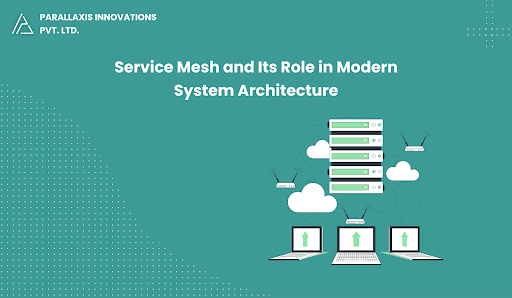Innovations
As software becomes more complex, especially with many small parts (called services ) working together, it can be hard to manage how these parts communicate....

As software becomes more complex, especially with many small parts (called services) working together, it can be hard to manage how these parts communicate. That’s where a service mesh helps. It makes communication between services easier, more secure, and more reliable.
In this blog, we’ll explain:
What a service mesh is
Why it’s important
How it helps modern software systems
A service mesh is a tool that helps manage how different services in a system talk to each other. It’s mostly used in systems built with microservices — small, separate parts that work together to form a full application.
The service mesh adds a layer on top of your system to manage communication, security, and monitoring. It takes care of the hard parts, so developers don’t have to do it manually.
Traffic Management: Controls how data flows between services
Security: Makes sure communication is safe and private
Observability: Helps you see what’s happening in the system
Fault Tolerance: Helps the system stay up even when something fails
It works using sidecar proxies — small helper programs placed next to each service. These proxies handle communication and apply rules automatically.
This is the brain of the service mesh. It gives the rules for how services should talk to each other — like where to send traffic, how to secure it, and how to track it.
This is where the rules are actually applied. It includes the sidecar proxies that:
Find other services
Encrypt data
Retry if something goes wrong
A service mesh lets you control how traffic moves between services. You can:
Balance traffic between different versions of a service
Split traffic for testing new updates (like A/B testing)
Retry failed requests or stop them after a timeout
Example: With Istio (a popular service mesh), you can send 10% of users to a new version of your service while the other 90% stay on the old one. This helps test safely.
In systems with many services, it’s important to keep communication safe. A service mesh provides:
mTLS (Mutual TLS): Encrypts data and ensures only trusted services can talk
Access control: Lets you control which services can talk to which
Identity management: Helps stop hackers from pretending to be a service
Example: Istio turns on mTLS by default, so your services communicate safely without extra setup.
Understanding how your system works is key to fixing issues and improving performance. A service mesh gives:
Tracing: Tracks how a request moves through services
Metrics: Shows how many requests are happening, errors, and response times
Logging: Collects logs from all services in one place
Example: Tools like Jaeger and Prometheus work with service meshes to give a full view of what’s happening in your system.
A service mesh helps your system keep working, even when something breaks:
Circuit breakers: Stop sending traffic to broken services
Retries & timeouts: Try again when something fails or stop if it takes too long
Rate limiting: Stop services from being overloaded
Example: If one service crashes, the mesh can quickly send traffic to a healthy one to keep your system running.
Istio: Full-featured and works well with Kubernetes
Linkerd: Simple and easy to use
Consul: Great for multi-cloud systems
AWS App Mesh: Works well with other AWS services
Apps built in the cloud often use many small services. A service mesh helps manage them easily, especially in systems like Kubernetes.
When you have many microservices, things get complicated. A service mesh helps keep everything organized and secure.
If your services run on different cloud providers or both cloud and local servers, a service mesh helps keep communication and security consistent.
You should consider a service mesh if:
You have many services that need to talk to each other
You want more control over how data flows
You need better security between services
You want to monitor and fix issues more easily
A service mesh helps modern systems by managing how services talk to each other. It adds:
Better control over traffic
Strong security
Easy monitoring
Protection against failures
This lets developers focus on building the app, instead of worrying about how services communicate.
If you’re working with microservices or cloud apps, a service mesh can make your system more secure, reliable, and easy to manage.